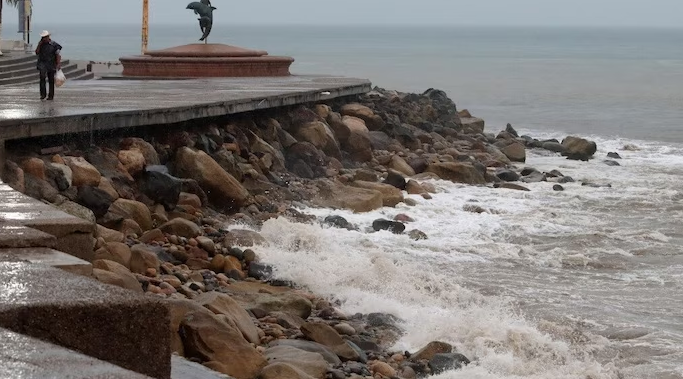Mexico’s Pacific coast faced a severe threat as Hurricane Lidia, described as “extremely dangerous” by meteorologists, made landfall near the popular beach resort of Puerto Vallarta. The storm, classified as a Category 4 hurricane, unleashed maximum sustained winds of approximately 140 miles (220 kilometers) per hour, prompting the US National Hurricane Center (NHC) to issue warnings about life-threatening winds and flooding.
President Andres Manuel Lopez Obrador mobilized around 6,000 armed forces members to assist residents, urging people to seek refuge in safe places and avoid low-lying areas, streams, rivers, and hillsides. Puerto Vallarta, a bustling destination for tourists, witnessed businesses boarding up windows and deploying sandbags in preparation for potential flooding. The city faced powerful winds, heavy rain, and crashing waves as residents and tourists hunkered down in shelters, while some were caught off guard by the rapid onset of the hurricane.
Lidia was expected to bring substantial rainfall, reaching up to 12 inches (30 centimeters) in Nayarit, Sinaloa, and Jalisco states, potentially causing flash floods, urban flooding, and mudslides in coastal areas. The NHC warned of a dangerous storm surge leading to significant coastal flooding, along with large and hazardous waves near the storm’s center.
Hurricanes are a common occurrence in Mexico, striking both the Pacific and Atlantic coasts between May and November each year. Earlier this week, Tropical Storm Max wreaked havoc in the southern state of Guerrero, claiming two lives and causing flooding in several houses. Scientists have emphasized the increasing intensity of storms due to climate change, underscoring the urgency of addressing the environmental crisis.

